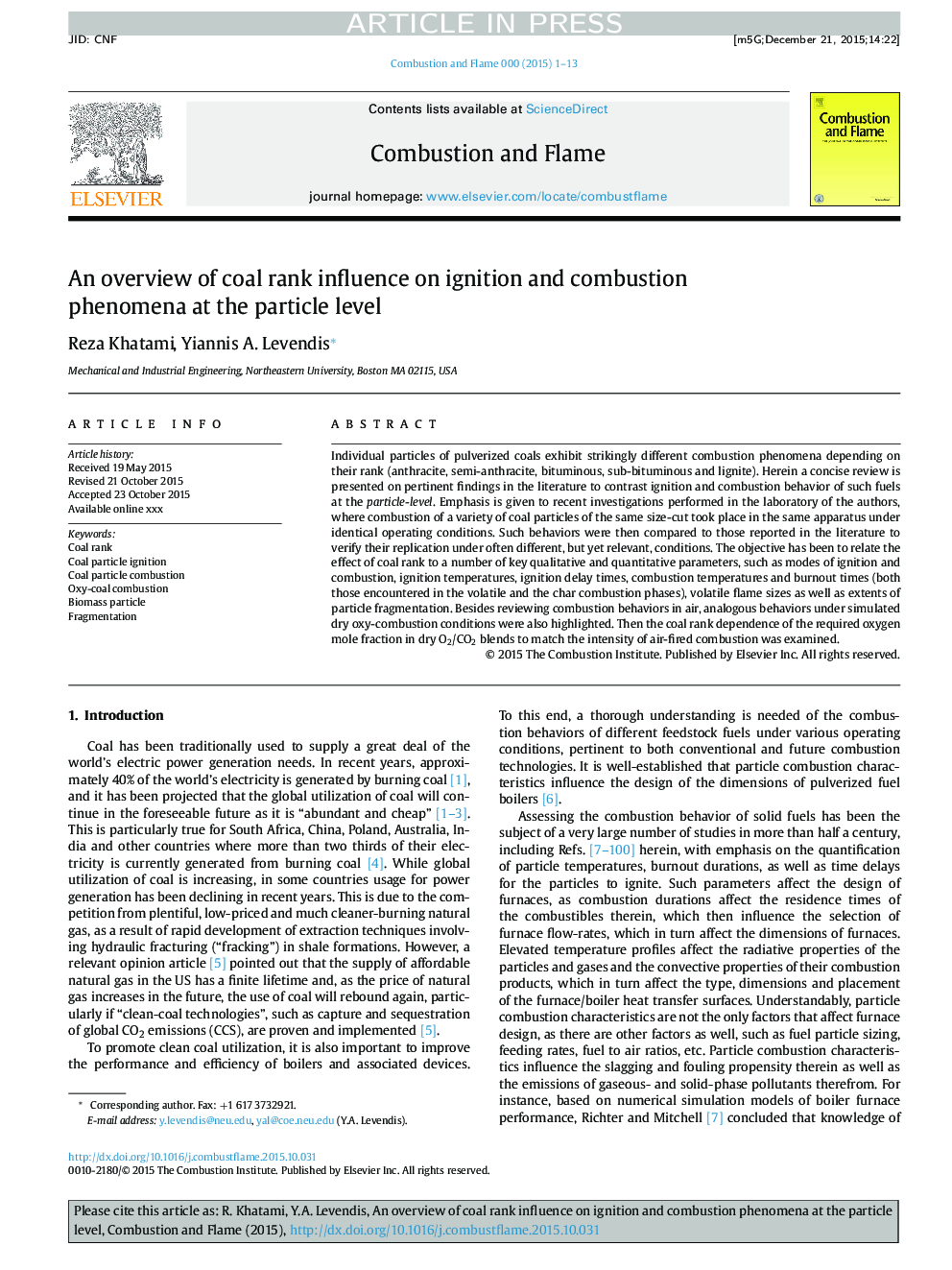| Article ID | Journal | Published Year | Pages | File Type |
|---|---|---|---|---|
| 6594262 | Combustion and Flame | 2016 | 13 Pages |
Abstract
Individual particles of pulverized coals exhibit strikingly different combustion phenomena depending on their rank (anthracite, semi-anthracite, bituminous, sub-bituminous and lignite). Herein a concise review is presented on pertinent findings in the literature to contrast ignition and combustion behavior of such fuels at the particle-level. Emphasis is given to recent investigations performed in the laboratory of the authors, where combustion of a variety of coal particles of the same size-cut took place in the same apparatus under identical operating conditions. Such behaviors were then compared to those reported in the literature to verify their replication under often different, but yet relevant, conditions. The objective has been to relate the effect of coal rank to a number of key qualitative and quantitative parameters, such as modes of ignition and combustion, ignition temperatures, ignition delay times, combustion temperatures and burnout times (both those encountered in the volatile and the char combustion phases), volatile flame sizes as well as extents of particle fragmentation. Besides reviewing combustion behaviors in air, analogous behaviors under simulated dry oxy-combustion conditions were also highlighted. Then the coal rank dependence of the required oxygen mole fraction in dry O2/CO2 blends to match the intensity of air-fired combustion was examined.
Related Topics
Physical Sciences and Engineering
Chemical Engineering
Chemical Engineering (General)
Authors
Reza Khatami, Yiannis A. Levendis,
